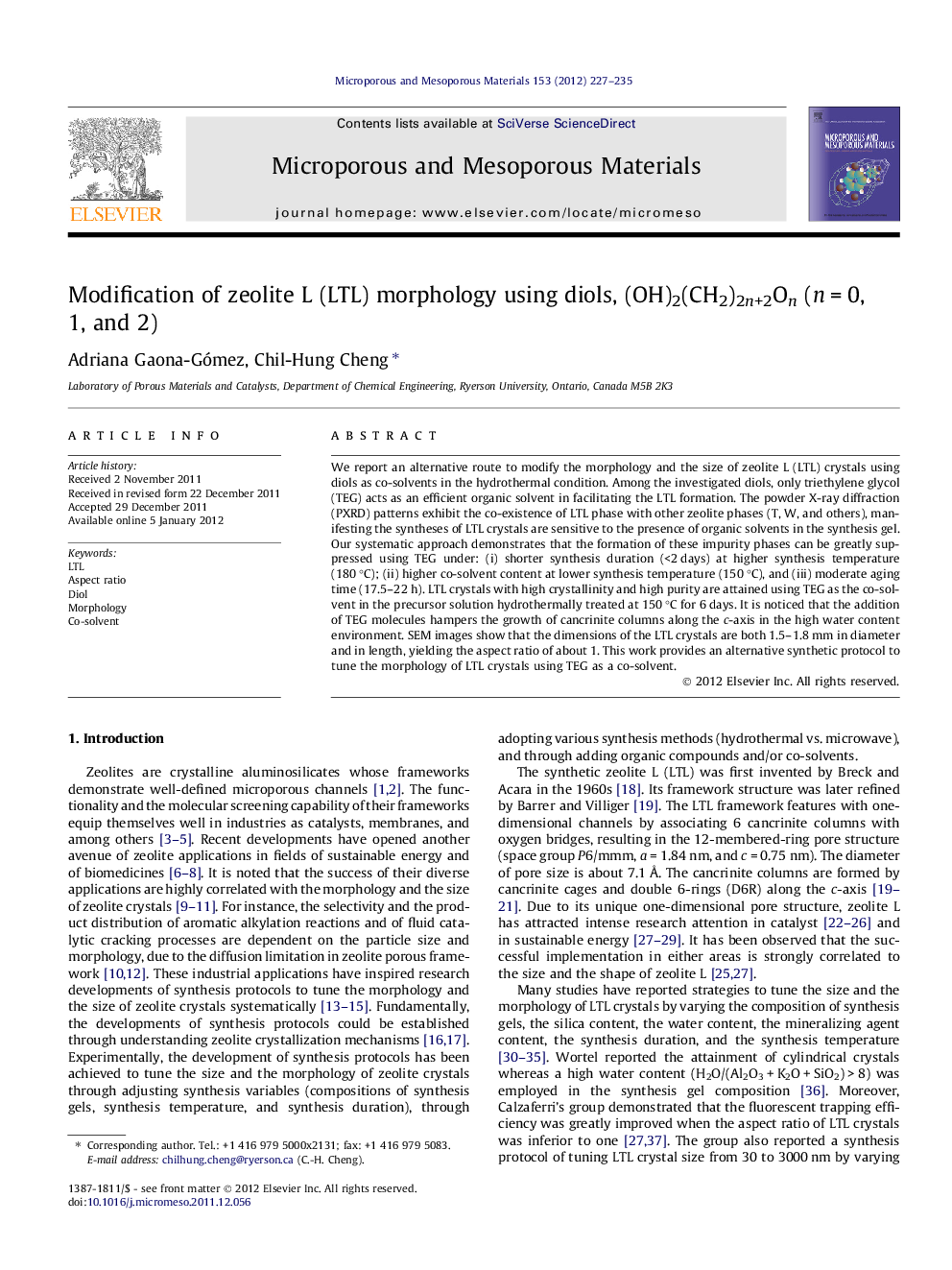| کد مقاله | کد نشریه | سال انتشار | مقاله انگلیسی | نسخه تمام متن |
|---|---|---|---|---|
| 74138 | 49081 | 2012 | 9 صفحه PDF | دانلود رایگان |

We report an alternative route to modify the morphology and the size of zeolite L (LTL) crystals using diols as co-solvents in the hydrothermal condition. Among the investigated diols, only triethylene glycol (TEG) acts as an efficient organic solvent in facilitating the LTL formation. The powder X-ray diffraction (PXRD) patterns exhibit the co-existence of LTL phase with other zeolite phases (T, W, and others), manifesting the syntheses of LTL crystals are sensitive to the presence of organic solvents in the synthesis gel. Our systematic approach demonstrates that the formation of these impurity phases can be greatly suppressed using TEG under: (i) shorter synthesis duration (<2 days) at higher synthesis temperature (180 °C); (ii) higher co-solvent content at lower synthesis temperature (150 °C), and (iii) moderate aging time (17.5–22 h). LTL crystals with high crystallinity and high purity are attained using TEG as the co-solvent in the precursor solution hydrothermally treated at 150 °C for 6 days. It is noticed that the addition of TEG molecules hampers the growth of cancrinite columns along the c-axis in the high water content environment. SEM images show that the dimensions of the LTL crystals are both 1.5–1.8 mm in diameter and in length, yielding the aspect ratio of about 1. This work provides an alternative synthetic protocol to tune the morphology of LTL crystals using TEG as a co-solvent.
Figure optionsDownload as PowerPoint slideHighlights
► Triethylene glycol (TEG) acts as a framework stabilizer for the LTL phase formation.
► Using TEG as the co-solvent identity tunes the morphology of LTL to a short cylinder.
► An optimal aging time and synthesis conditions suppress the formation of impurities.
► Ostwald ripening mechanism prevails during LTL crystallization.
Journal: Microporous and Mesoporous Materials - Volume 153, 1 May 2012, Pages 227–235